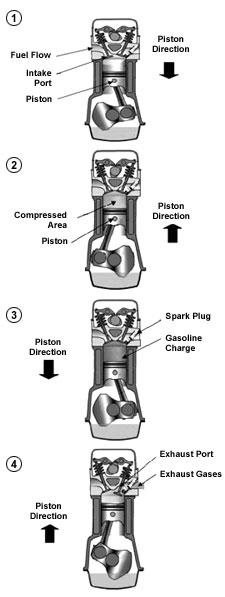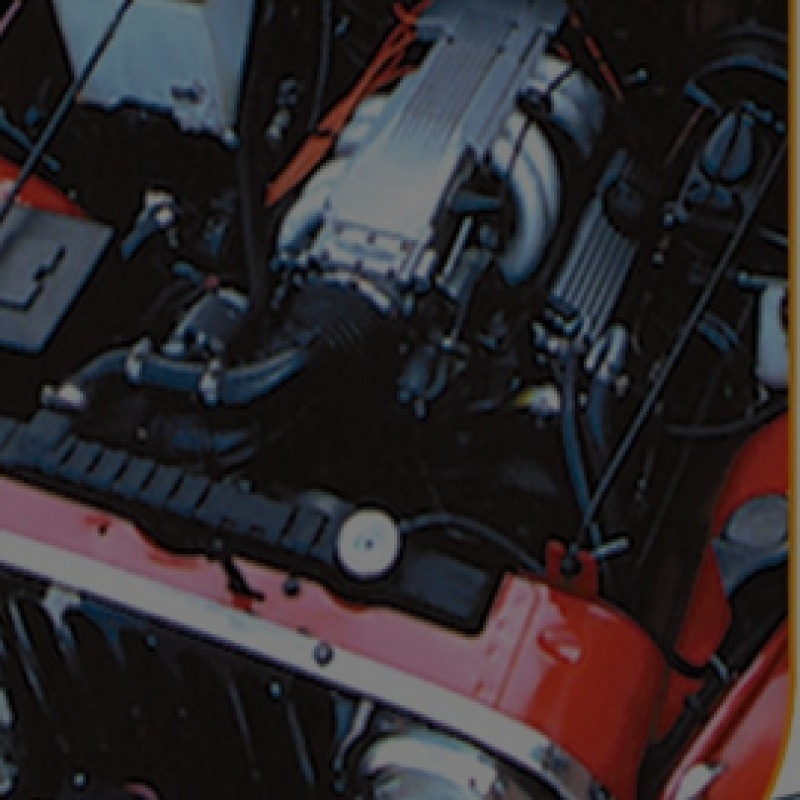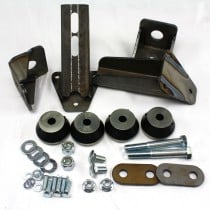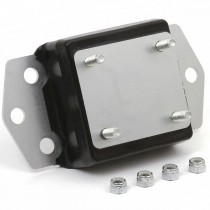Internal Combustion Engine Basics
In 1885 Gottlieb Daimler constructed what is generally recognized as the prototype of the modern gas engine: small and fast, with a vertical cylinder, it used gasoline injected through a carburetor. In 1889 Daimler introduced a four-stroke engine with mushroom-shaped valves and two cylinders arranged in a V, having a much higher power-to-weight ratio; all modern gasoline engines are descended from Daimler's engines.
How a Four Stroke Engine Works

To understand the basic idea behind how a reciprocating internal combustion engine works, it is helpful to have a good mental image of how "internal combustion" works. If you put a tiny amount of high-energy fuel (like gasoline) in a small, enclosed space and ignite it, an incredible amount of energy is released in the form of expanding gas. If you can create a cycle that allows you to set off explosions like this several hundred times per minute, and if you harnessed that energy in a useful way, you would have the core of a car engine!
Here's what happens as a car engine goes through its cycle:
- Intake Stroke
The piston starts at the top, the intake port opens, and the piston moves down to let the engine take in a cylinder-full of air and gasoline. Only the tiniest drop of gasoline needs to be mixed into the air for this to work. - Compression Stroke
Then the piston moves back up to compress this fuel/air mixture. The compression stroke makes the explosion more powerful. - Power Stroke
When the piston reaches the top of its stroke, the spark plug emits a spark to ignite the gasoline. The gasoline charge in the cylinder explodes, driving the piston down. - Exhaust Stroke
Once the piston hits the bottom of its stroke, the exhaust valve opens and the exhaust leaves the cylinder to go out the tail pipe.
Now the engine is ready for the next cycle, so it intakes another charge of air and gas.
Almost all cars today use this type of reciprocating internal combustion engine because this engine is:
- Efficient compared to an external combustion engine.
- Relatively inexpensive compared to a gas turbine.
- Easy to refuel compared to an electric car.
These advantages beat any other existing technology for moving a car around.







